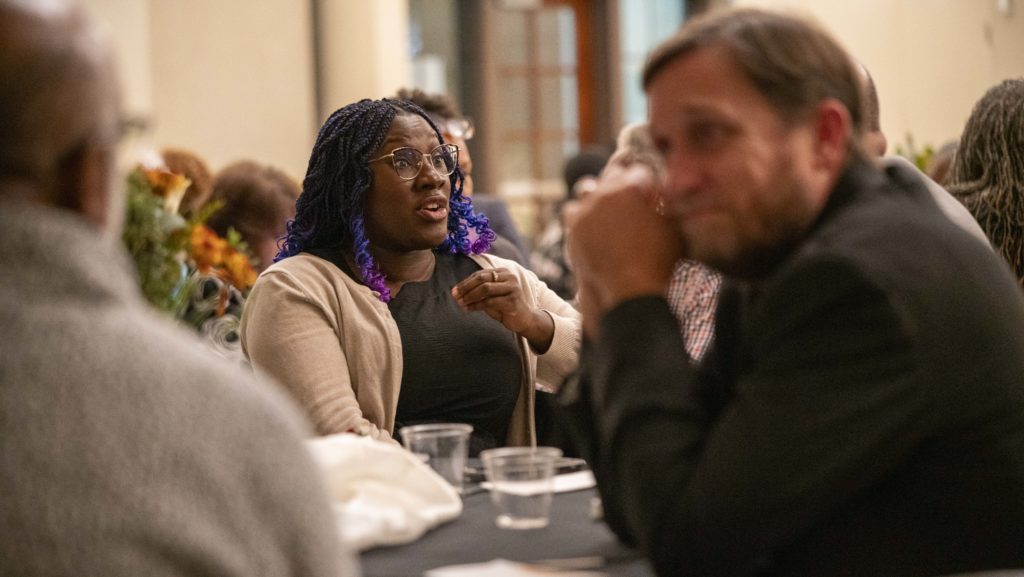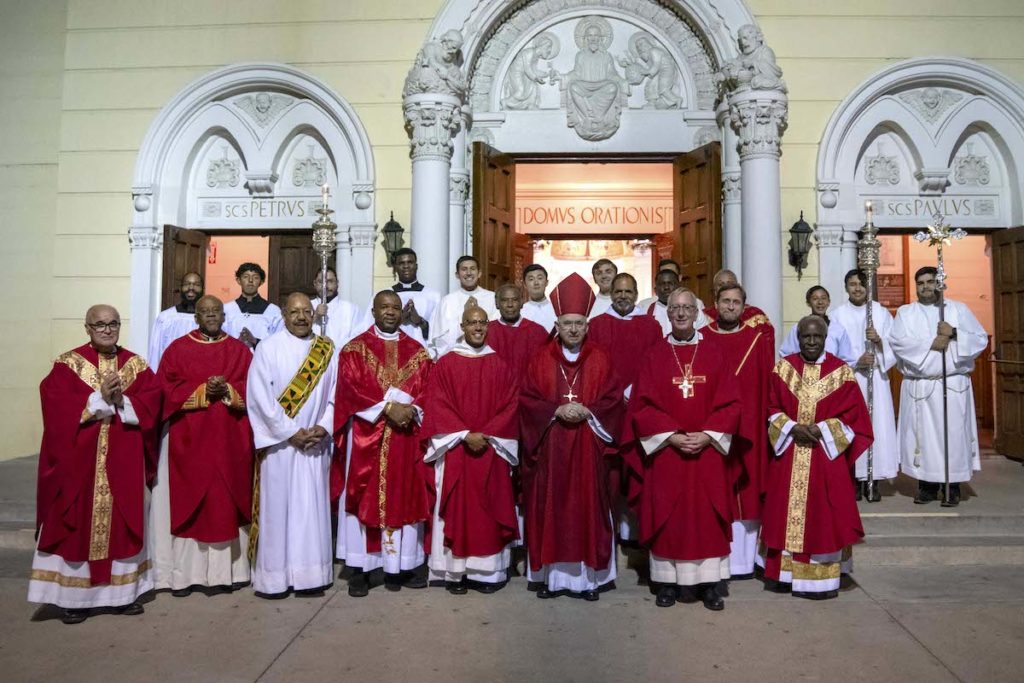When 10 Black bishops decided to issue a pastoral letter on the state of Black Catholicism in the U.S. in 1984, they identified a few basic priorities: overcoming racism, creating opportunities to experience the Church as a community, and passing the faith to future generations.
Forty years later, more than 100 Black Catholics marked the anniversary of the release of “What We Have Seen And Heard,” by gathering for a two-day congress in the Wilmington area of Los Angeles. The agenda: to look at how far Black Catholicism in the U.S. has come, and where it may be headed.

“It’s just another opportunity for us to gather the community and say, ‘Look at what the Lord has done in 40 years and what is ahead of us in the future,’ ” said Michael Donaldson, senior director of the archdiocese’s Office of Life, Justice and Peace and one of the Regional Black Catholic Congress’ main organizers.
Held at Sts. Peter and Paul Church in Wilmington, the event featured workshops, keynote speakers, a youth track, music, liturgies, and even time for the sacrament of confession.
Sponsored by Donaldson’s office, this is the first such congress held on the West Coast. According to Cynthia Jones-Campbell, the LA Archdiocese’s associate director for race relations, the congress is about providing “a platform for Black Catholics of all ages to discuss and learn how to evangelize more effectively and connect locally.”

The idea for the event started with Father Claude Williams — a Norbertine priest who was pastor of Sts. Peter & Paul until this summer — after he returned from the National Black Catholic Congress last year in Maryland. Leaders there saw a need for senior members to facilitate passing the torch to the up-and-coming generation of Black leaders. In Wilmington, participants talked about what that should look like.
“I think the biggest priorities I would hope for would be elevating the voices of young people — not just their voices, but for them to take up space, take on leadership roles, and become more active in our Church,” said keynote speaker Lauren Warner, an Inglewood native and Ph.D. candidate at Boston College’s Clough School of Theology and Ministry.
Empowering the younger generation is especially important, said Williams, since traditionally Black religious spaces around the country — namely parishes and schools, where Black ministry has traditionally taken place — are disappearing.
“The blessing is that the power of the Gospel in our lives as baptized individuals is still very much at work and alive,” said the priest, who was assigned to a leadership position in Rome by his religious order a few months ago.

“So as certain structures seem to be dismantled or [are] dismantling, God himself is building up in the hearts of believers who trust him, the same ability to communicate faith in him to others.”
Another challenge raised in the 1984 letter was how to preserve distinctively Black Catholic styles of worship. From Gospel music to movement and other forms of joyful expression, the pastoral letter outlines how these are Black gifts that enrich the Church.
Resistance to the way Blacks worship, along with racism and trying to find solidarity within the broader Catholic church and Catholic experience, are the biggest obstacles from Warner’s perspective.
“I think that’s a big challenge we have fought for a very long time and continue to,” Warner said.
The issue is more than such “outward expressions,” said speaker Chika Anyanwu, a Catholic author, evangelist, and former youth and young adult minister. Although it’s a part of the problem, Anyanwu said Black Catholics often experience a sense of being watched and questioned uncomfortably in Catholic spaces.
“I don’t think that it is a paranoia,” Anyanwu said. “So just the welcome really needs to be a welcome. We belong just as much as the next person, just as much as any Catholic, and some of the ways that can be expressed are just like with other cultures: the beauty of the Vietnamese traditions, the Mexican traditions.”

Being open, welcoming, and celebratory of one another’s gifts is key, said Donia Brooks, a Redlands resident who works with the Office of Ministry to Catholics of African Descent in the Diocese of San Bernardino. Citing the assertions made in “What We Have Seen and Heard,” Brooks said the Catholic Church is universal — but that doesn’t mean being uniform.
“There is still that resistance to allowing the community to be as God made us in his image and likeness,” Brooks added. “We are a people that he made of movement and worship and music in our being. It’s who we are.”
At Mass on the congress’ first day, Archbishop José H. Gomez noted that the conference was happening during Black Catholic History Month, while recalling the “presence of such a great cloud of witnesses, the holy men and women who make up our Black Catholic communion of saints,” including Servant of God Thea Bowman.

A convert to Catholicism at the age of 9, Bowman eventually entered religious life and helped found the National Black Sisters’ Conference. Bowman’s emphasis on the day-to-day lived witnesses of Catholics, Archbishop Gomez recalled, was a “rich and beautiful expression of the meaning of evangelization, which always begins in love, in the desire to share with others the love that we have found in Jesus.
“This is …the kind of love that can change people’s lives, the kind of love that opens their hearts to the love of Jesus.”
In some ways, the congress can trace its roots back to Archbishop Gomez’s decision to form an anti-racism task force in the LA Archdiocese in the wake of nationwide unrest following the death of George Floyd at the hands of police in Minnesota. Made up of 14 men and women of various backgrounds and focusing initially on Black issues, its work has resulted in the formation of similar task forces in parishes around Southern California.
Greg Hogan serves on such a task force at his parish, St. Edward the Confessor in Orange. He said the congress provided a rare opportunity to meet and connect with other Black Catholics.

While the Catholic Church has done a good job of “analyzing racism, its sources and different forms of racism” and in providing direction to the broader Church on how to face it, Hogan believes it should create “action steps that we can take to make sure that every person of color in our Church feels that our Church is home to him or her.
“The Church has to have our back when we face racial issues,” said Hogan. “We still face them.”
Donaldson agreed, calling racism “a sin that we have to confront” as a Church.
“We are definitely working on that portion of it, but we also know that we need to go back to the basic roots, foundation, and the biblical point of view on what we’re doing here,” said Donaldson. “God created one holy nation, and we’re called to unite and celebrate that diversity among the community.”